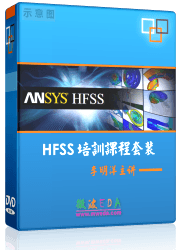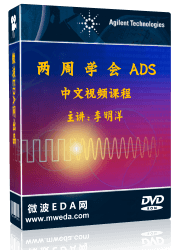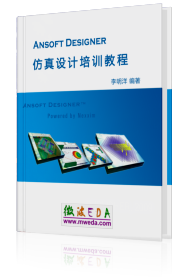Special Solver Parameters - Solver
 Solver Solver Start Simulation Start Simulation Specials Specials Solver Solver
Special settings frame
Normalize to
reference signal [always normalized if default signal is used]:
In case of the default Gaussian excitation signal, which is predefined
in CST MICROWAVE STUDIO, all frequency results of the transient solver
are automatically normalized to the spectrum of this default signal in
order to provide consistent broadband results, independent of the transient
excitation signal. This allows convenient comparisons to e.g. frequency
domain solver results.
However, selecting other signals for excitation,
e.g. a rectangular pulse or an imported signal, this normalization step
is not done by default. This means that in these cases all frequency results
are purely represented by the unnormalized discrete Fourier transformation
of the correspondent transient data. In any case, you can still apply
a normalization step to the selected reference signal in CST MICROWAVE
STUDIO by enabling this check button, independent whether this signal
is actually used or not. As mentioned above, changing this button has
no influence when the default Gaussian excitation signal is used.
In case of a transient co-simulation run, usually
the excitation is driven from within CST DESIGN STUDIO. Consequently also
the result normalization can be controlled here, either normalizing to
a Gaussian reference signal or not. This can be defined for each task
separately and consistently effects both, the frequency domain results
in CST MICROWAVE STUDIO as well as in CST DESIGN
STUDIO.
Please find further information in this context
on the Reference
Value and Normalization page.
Automatic S-parameter adjustment: Disable
this check button to receive pure S-parameter results without any passivity
adjustment.
Prepare
Farfields: All farfield results are
automatically precalculated to speed up the postprocessing.
Open boundary settings frame
PML Type:
Here, you may specify the PML formulation. Allowed options are ConvPML
for the Convolution PML or GTPML for the Generalized
PML theory.
The default value is the Convolution PML which
provides a material independent absorbing boundary condition. In addition
to electric and magnetic material properties also conducting materials
are considered for this absorbing boundary.
The Generalized PML theory provides a basic
absorbing boundary condition, considering only electric and magnetic materials.
Variable PML
layer mesh steps: The mesh steps inside the PML are increased towards
the outer PML boundary to allow a maximal possible PML depth. The number
of used layers is defined in the Settings
for PML Boundary dialog.
Keep PML depth
during adaptive mesh refinement: The initial PML depth is maintained
during adaptive mesh refinement passes. Consequently the number of PML
layers increases with subsequent passes, however, the total number of
PML layers is kept as small as possible by applying variable PML layer
mesh steps.
Time integrator settings frame
In
this dialog box, some special settings concerning the PBA model in connection
with the time step calculation can be made. Note that these parameters
are sensitive regarding the stability of the time domain calculation,
so be careful when changing them.
Subcycling:
Choosing the Activate selection
will always check for the possibility to use them in the calculation whereas
the button Deactivate prevents
this procedure. The Automatic
detection will instead come to this decision by an internal procedure.
Subgrid
specific cycling: In case that the
Multilevel
Subgridding Scheme is activated for a given simulation structure,
the different grid levels can be calculated with different timesteps.
Then the basic timestep presented in the solver information window or
in the solver result file corresponds to the finest mesh level, each coarser
mesh level is updated with the twofold timestep, fourfold timestep and
so on. Consequently, the time step factor defined in the Special Solver Parameters
- General dialog page is multiplied to the timesteps of all levels.
In addition to the
reduced mesh cells of a subgridding model, this functionality might lead
to yet another improvement of the simulation time.
The subgrid specific
cycling behavior can be switched on and off by choosing the Activate
or Deactivate
selection. In addition and similar to the subcycling procedure described
above this decision can be made automatically by selecting the
Automatic
detection.
OK
Accepts the input and closes the dialog.
Cancel
Closes this dialog box without performing any
further action.
Help
Shows this help text.
See also
Solver,
Signals
in Time Domain Simulations Overview, Settings
for PML Boundary
Special Solver Parameters: Waveguide, Steady
State, AR-Filter, Material,
General




HFSS视频教程
ADS视频教程
CST视频教程
Ansoft Designer 中文教程
|